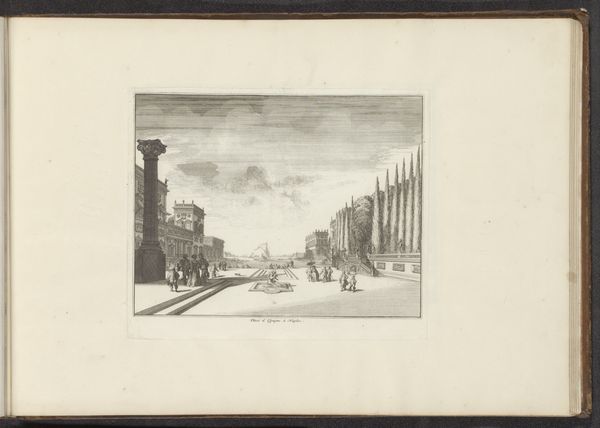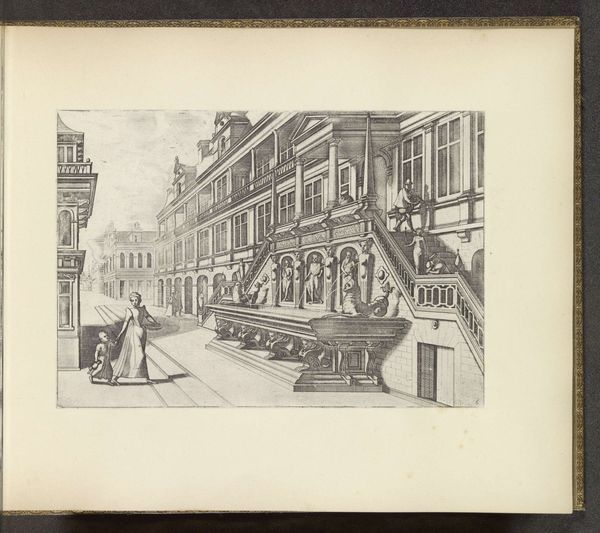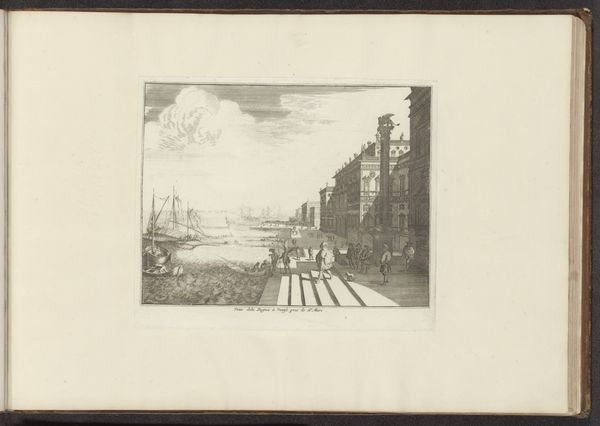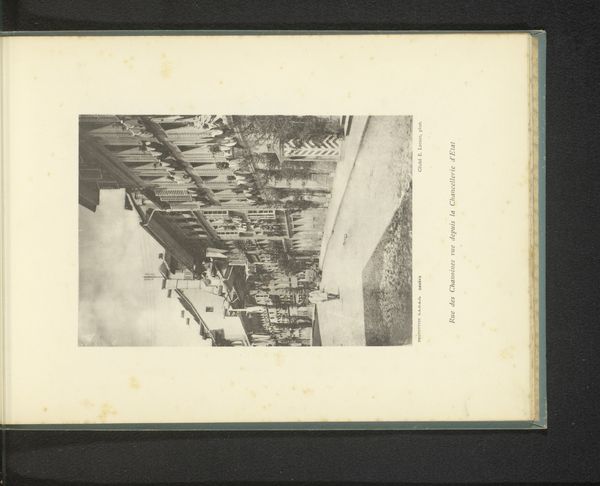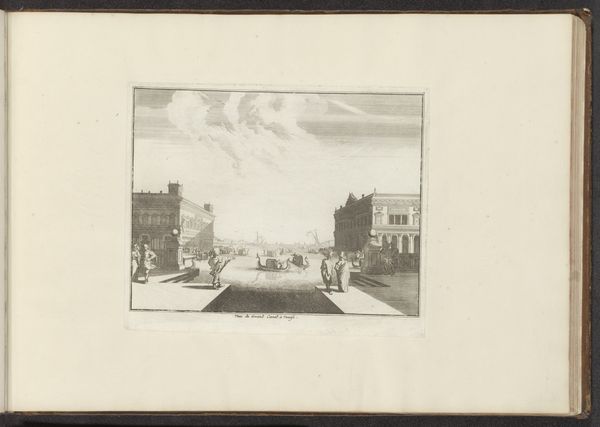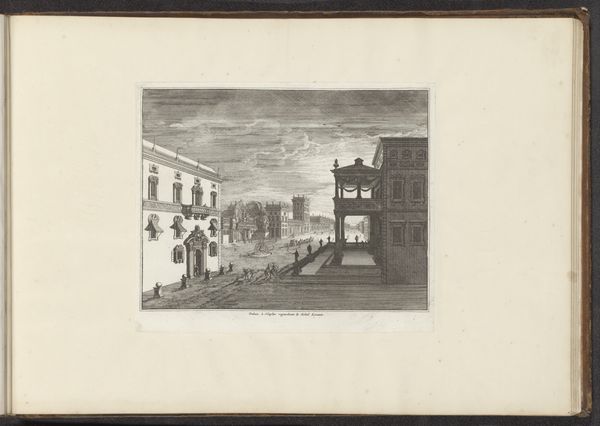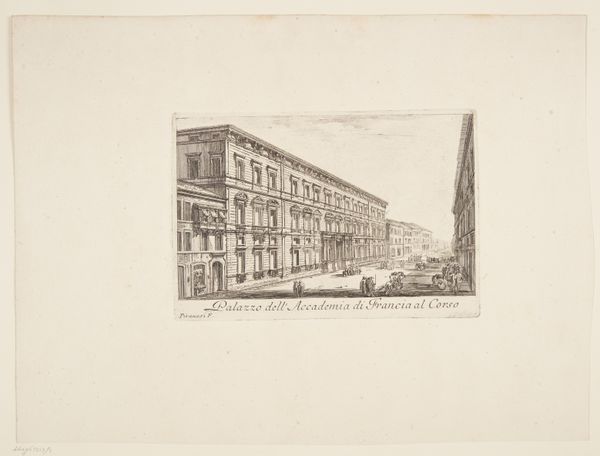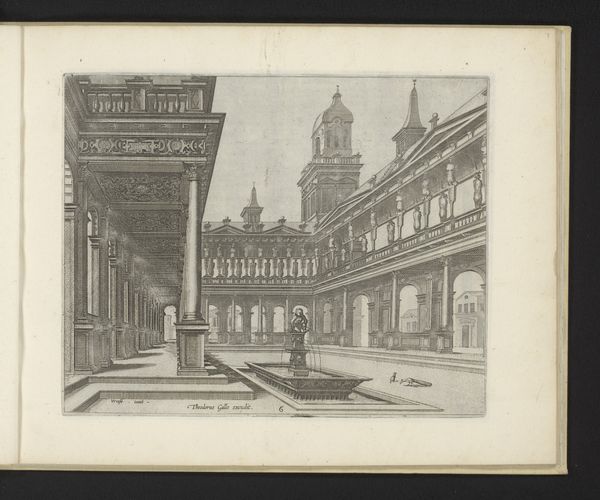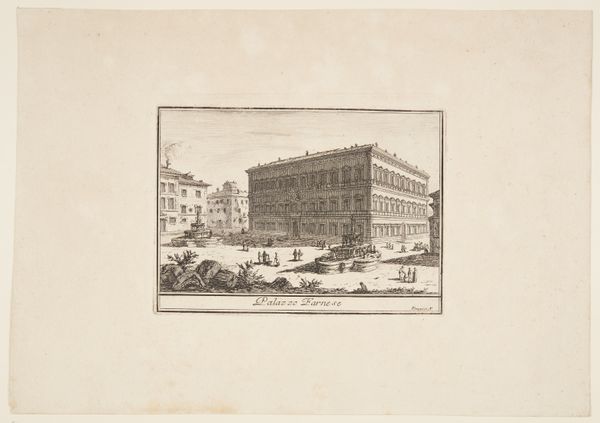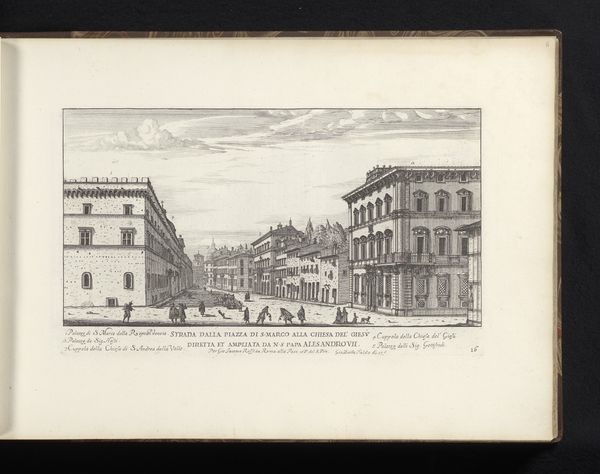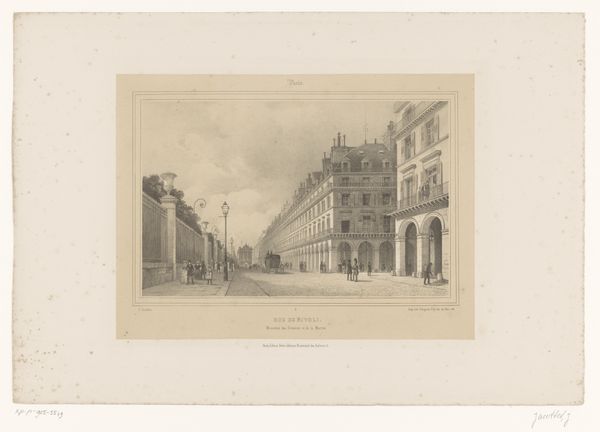
drawing, print, paper, ink, engraving
#
drawing
#
baroque
# print
#
pen sketch
#
pencil sketch
#
old engraving style
#
landscape
#
perspective
#
paper
#
ink
#
classicism
#
line
#
cityscape
#
italian-renaissance
#
engraving
Dimensions: height 220 mm, width 268 mm
Copyright: Rijks Museum: Open Domain
Curator: The drawing before us, from around 1700-1710, offers a "View of Villa Borghese in Rome." While the artist remains anonymous, the work’s delicate ink lines and attention to perspective offer a captivating glimpse into this Italian Renaissance architectural landmark. Editor: My first impression is one of quietude and deliberate stillness, as if capturing a fleeting moment frozen in time. I'm struck by how the artist uses line to define the massive architecture while also conveying a sense of expansive space. Curator: It is fascinating how the artist balances the grandeur of the Villa Borghese with the intimate scale of daily life, you can see people, rendered almost as afterthoughts, traversing the space. Consider the social context of the villa itself – a nexus of power, wealth, and cultural patronage, which informed both the landscape and how the space was inhabited. Editor: Absolutely, that tension is interesting. The clean lines and structured perspective highlight the geometric harmony. I see strong lines receding into space, almost as a formula, guiding the viewer's eye and creating a sense of depth and measured rhythm. I wonder about the relationship between nature, seen here in rigidly aligned trees, and the constructed environment of the villa? Curator: That controlled landscape reflects a broader societal drive for order. This pursuit of perfection had dire social implications as wealth became unequally distributed. Furthermore, it ignores other lived realities. What perspectives of those who toiled on the grounds remain unrepresented, obscured in the margins of this seemingly objective record? Editor: Yes, and what about the composition, itself? The dark ink creating crisp architectural details versus the soft, washed grey that creates atmospheric recession? The semiotic relationships at work tell a complex visual story about space, form, and perception itself. Curator: The act of viewing then is complicated, inviting critical contemplation not just of what is presented, but of what remains omitted. By engaging these tensions, this drawing speaks to contemporary issues concerning representation, authority, and social visibility. Editor: I agree. Engaging with this drawing reminds me of how even seemingly straightforward visual documents can prompt us to analyze deeply not just how things look, but how the ways we structure and process visual information reveals more. Curator: Precisely, its lasting resonance lies not only in its beauty but in its capacity to provoke discourse and challenge preconceptions.
Comments
No comments
Be the first to comment and join the conversation on the ultimate creative platform.
